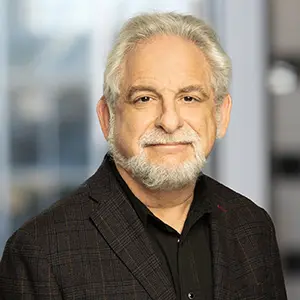November 6, 2023
@
12:00 PM
–
1:00 PM

The seminar has been canceled.
Neural Network Approaches for Soft Biological Tissue and Organ Simulations
Michael S. Sacks, PhD
James T. Willerson Center for Cardiovascular Modeling and Simulation
Director, Oden Institute for Computational Engineering and Sciences
Professor of Biomedical Engineering
The University of Texas at Austin
Abstract:
Given the functional complexities of soft tissues and organs, it is clear that computational simulations are critical in their understanding and for the rational basis for the development of therapies and replacements. A key aspect of such simulations is accounting for their complex, non-linear, anisotropic mechanical behaviors. While soft tissue material models have developed to the point of high fidelity, in-silico implementation is typically done using the finite element (FE) method, which remains impractically slow for translational clinical time frames. As a potential path towards addressing the development of high fidelity simulations capable of performing in clinically relevant time frames, we review the use of neural networks (NN) for soft tissue and organ simulation using two approaches. In the first approach, we show how a NN can learn the responses for a detailed meso-structural soft tissue material model. The NN material model not only reproduced the full anisotropic mechanical responses but also demonstrated a considerable efficiency improvement, as it was trained over a range of realizable fibrous structures. In the second approach, we go a step further with the use of a physics-based surrogate model to directly learn the displacement field solution without the need for raw training data or FE simulation datasets. In this approach we utilize a finite element mesh to define the domain and perform the necessary integrations, but not the finite element method itself. We demonstrate with this approach, termed neural network finite element (NNFE), results in a trained NNFE model with excellent agreement with the corresponding ground truth FE solutions over the entire physiological deformation range on a cuboidal myocardium specimen. More importantly, the NNFE approach provided a significantly decreased computational time for a range of finite element mesh sizes. Specifically, as the FE mesh size increased from 2,744 to 175,615 elements, the NNFE computational time increased from 0.1108s to 0.1393s, while the ground truth FE model increased from 4.541 s to 719.9 s, with the same effective accuracy. These results suggest that NNFE run times are significantly reduced compared with the traditional large-deformation based finite element solution methods. We then show how a NURBS-based approach can be directly integrated into the NNFE approach as a means to handle real organ geometries. While these and related approaches are in their early stages, they offer a method to perform complex organ-level simulations in clinically relevant time frames without compromising accuracy.
Print PDF